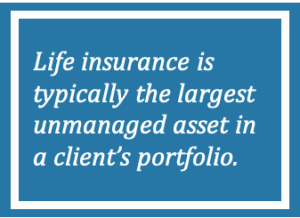The Definitive Guide to Pacific Prime
The Facts About Pacific Prime Revealed
Table of ContentsOur Pacific Prime IdeasThe Basic Principles Of Pacific Prime Rumored Buzz on Pacific PrimeThe Only Guide for Pacific Prime
In a lot of states, the insurance firm is needed to send you a copy of the modifications to your plan. It is essential that you review Recommendations or Cyclists so you recognize just how your plan has altered and if the plan is still adequate to meet your needs. To get a duplicate of your insurance coverage plan, please call your insurance policy representative or business.
The Institute of Medicine (IOM) Committee on the Consequences of Uninsurance launches an extended evaluation of evidence that addresses the relevance of medical insurance coverage with the magazine of this report. Protection Issues is the initial in a series of six records that will certainly be issued over the next 2 years documenting the fact and effects of having an approximated 40 million individuals in the USA without medical insurance coverage.

Top Guidelines Of Pacific Prime
The goal of this series of researches is to refocus policy focus on a historical issue. Complying with the lengthiest economic development in American history, in 1999, an approximated one out of every six Americans32 million grownups under the age of 65 and more than 10 million childrenremains uninsured (Mills, 2000).
10 percent of the populace accounts for 70 percent of healthcare expenses, a correlation that has continued to be consistent over the past 3 decades (Berk and Monheit, 2001) - group insurance plans. Hence health insurance policy continues to serve the feature of spreading danger also as it significantly funds regular care. From the viewpoint of wellness treatment carriers, insurance coverage carried by their people aids protect an income stream, and neighborhoods take advantage of economically viable and stable healthcare professionals and organizations
Federal government gives medical insurance to populaces whom the private market may not serve effectively, such as impaired and senior citizens, and populations whose accessibility to healthcare is socially valued, such as youngsters and expectant women. The best ends of health and wellness insurance policy protection for the private and neighborhoods, including office communities of employees and employers, are enhanced wellness outcomes and quality of life.
Pacific Prime Fundamentals Explained
Employees rank health insurance first by much in value among all the benefits offered in the workplace (Salisbury, 2001). Although there have been large investments of individual and public funds to give health insurance policy, you could try this out lots of people still have no coverage. In spite of extensive coverage of survey searchings for and health care study results, the public stays overwhelmed and mistaken concerning Americans without health insurance and the implications of doing not have insurance coverage.

Without inquiry, the intricacy of American health care financing devices and the wealth of sources of info include in the general public's confusion and uncertainty regarding wellness insurance stats and their analysis. This record and those that will certainly follow objective to boil down and present in readily reasonable terms the extensive study that bears upon questions of health insurance protection and its importance.
Fifty-seven percent of Americans polled in 1999 thought that those without wellness insurance policy are "able to obtain the treatment they require from physicians and hospitals" (Blendon et al., 1999, p. 207). In 1993, when national interest was concentrated on the issues of the uninsured and on pending health and wellness care regulations, simply 43 percent of those questioned held this idea (Blendon et al., 1999).

They additionally receive less preventative services and are much less likely to have normal look after chronic conditions such as high blood pressure and diabetes mellitus. Chronic diseases can result in pricey and disabling problems if they are not well handled (Lurie et al., 1984; Lurie et al., 1986; Ayanian et al., 2000). One national study asked more than 3,400 adults concerning 15 very significant or morbid problems.
The Definitive Guide for Pacific Prime
Additional proof is offered later in this phase in the conversation of insurance and access to wellness treatment. https://dzone.com/users/5122954/pacificpr1me.html. People without medical insurance are young and healthy and choose to go without coverage. Virtually half (43 percent) of those evaluated in 2000 thought that people without medical insurance are more probable to have wellness troubles than people with insurance coverage
Citizens and policy manufacturers in focus team discussions define those without insurance as young individuals that have the opportunity to be covered and feel they do not require it (Porter Novelli, 2001). Contrasted to those with a minimum of some personal coverage, the without insurance are less likely to report being in superb or excellent health (Firm for Health Care Research and High Quality, 2001).
RESOURCE: Facility for Cost and Financing Research Studies, Firm for Healthcare Research Study and Top quality, based on MEPS information. Young person between 19 and 34 are even more most likely to do not have medical insurance than any other age. This is primarily due to the fact that they are less typically eligible for employment-based insurance policy as a result of the nature of their task or their short tenure in it.
The perception that individuals without insurance have better-than-average health follows from perplexing the reasonably young age account of the uninsured with the far better health and wellness, generally, of more youthful persons. This covers the web link in between health and wellness status and health insurance coverage. For those without accessibility to workplace wellness insurance coverage, inadequate health and wellness is a possible barrier to buying nongroup protection due to the fact that such insurance coverage may be extremely priced, leave out preexisting problems, or be just unavailable.